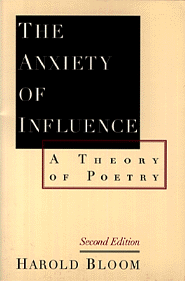
Shelley and Keats
The Second Generation of Romantics
Writers in Wordsworth's lifetime did not think of themselves as Romantics (see Romanticism); the word was not applied until half a century later, by English historians. Contemporary critics and reviewers treated them as independent individuals, or else grouped them (often invidiously, but with some basis in fact) into a number of separate schools: "the Lake School" of Wordsworth, Coleridge and Robert Southey; the "Cockney School," a derogatory term for the Londoners, Leigh Hunt, William Hazlitt and associated writers, including Keats; and the "Satanic School" of Byron, Percy Shelley and their followers.
New Directions:
Based on what you covered last year with Romantic poetry, reread this unit in a new light. Consider two points: (1) Shelley's and more so Keat's heighten awareness of consciousness and different states of consciousness in most of the poems; (2) because most of you read the afterward in our edition of Frankenstein, Harold Bloom's theory, anxiety of influence.
By the time he wrote "Ode to a Nightingale" in 1819, John Keats was familiar with the tribulations of life. He enumerates them in the third stanza of his poem: "We must work and worry, grow old, become infirm, feel pain." Even "youth grows pale, spectre-thin, and dies." But far worse than the afflictions that come with being mortal, man must live with the awareness of age, death and loss: "But to think is to be full of sorrow/and leadeneyed despairs," he writes. Knowledge and reflection bring unhappiness. When we are still young we know that we will one day die; when we are in love, we know that beauty and love will one day pass. To this sorrowful self-awareness, Keats contrasts the unthinking happiness of the nightingale. "Thou wast not born for death, immortal Bird!" the poet says. Death cannot interfere with the nightingale's happiness because the nightingale knows nothing of death.
Reflecting on the song, Keats is drawn back to this "forlorn" life, back into his "sole self." The song of the nightingale and its pure, unconscious happiness disappear. The poet's moment of self-forgetfulness ends. When he returns to normal awareness, he is not sure what has happened. The two modes of experience, conscious thought and unconscious perception, are so different that it is impossible to comprehend one with the other. Keats is left wondering which of the two is real: the mode of experience that has just slipped through his fingers, or the one he experiences now.

Click the link below to learn more about Bloom's famous theory:
http://prelectur.stanford.edu/lecturers/bloom/excerpts/anxiety.html#ratios
Additional links:
For a great web site, click on Penelope's find: www.john-keats.com
Content for the above passage Keats and Shelley was copied and gleaned from a great teaching resourse: Poetry for Students, Volumes 1-12. Comp. and Ed. Elizabeth Thomason. Michigan: Gale Group, 1999.